Plastic ventilation pipes for hoods: types, their characteristics, application
The organization of effective ventilation in the house is not a whim of the owner, but a necessity dictated by sanitary standards. For the installation of such a system, plastic ventilation pipes for hoods are increasingly being chosen as the simplest, most productive and relatively inexpensive option.
Our article is devoted to the arrangement of air ducts from plastic ventilation parts. We will tell you how to choose components for assembling the system and how to assemble it flawlessly. Here you will learn which devices should be equipped with ventilation for stable operation.
The content of the article:
Advantages and types of plastic pipes
These lightweight products, in addition to ease of installation, are characterized by a host of other advantages: environmental friendliness, resistance to the negative effects of ultraviolet radiation, durability, low specific gravity, high resistance to aggressive environments, large size range and relatively low cost.
The disadvantage is the low temperature stability threshold, which does not allow their use in industrial conditions. For a private home, they are perfect.
In the construction market there are products of different lengths and diameters. There is a length limit for a PVC pipe - 3 m minimum and 12 m maximum. Their diameter ranges from 1.6 to 160 cm. For a cottage, the optimum cross-section of the exhaust pipe is 15 x 15 cm.
Of no small importance is the fact that the inner surface of PVC pipes is treated with an antistatic agent, due to which almost no dust settles in them, which prolongs the frequency of maintenance of air ducts.
According to the type of section, 2 types of pipes made of plastic are distinguished:
- round;
- rectangular.
Corrugated varieties also belong to round pipes, with the help of which turns of air ducts are conveniently, quickly and efficiently performed.
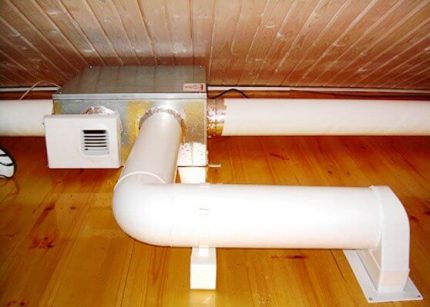
From the point of view of aesthetics, a rectangular section is preferable, but when the room has a small area, a pipe with a circular section is more suitable, because in this case there are no protruding parts.
The marking on the square pipe makes it possible to navigate with respect to the correspondence of the rectangular section to a similar circular air channel.
In a country house with gas heating, the combustion products of the boiler are vented through an exhaust pipe that exits through the roof. The main enemy of the design is condensate, which appears when the temperature drops in the autumn-winter period.
He does not destroy the pipe itself from plastic. However, moisture flowing along its walls can cause significant harm to the building, so the plastic duct at the outlet must be insulated.
Plastic pipes are contraindicated for hoods arranged in baths and saunas, for chimneys and fireplaces, solid fuel boilers. If you still use them in these places, then you need to lay pipes from this material only from the outside. In this case, they will have to be well insulated from the cold.
In detail about choosing pipes for hoodsmade of polymeric materials is described in our recommended article.
Hard polymer products
Choosing a plastic pipe for the installation of the hood, you do not have to worry about the harmful effects of corrosion and internal cleaning of the ventilation system. Passing through a smooth surface, the air stream does not meet obstacles in its path and does not create a lot of noise. So that the duct does not stand out against the background of the wall, a PVC pipe for the hood in the kitchen is laid over the cabinets.
In a pipe with a smooth inner surface there are no stepped bulges and relief drops that accumulate fatty deposits and dirt. This greatly facilitates the maintenance of the exhaust structure. At installation use L-shaped adapters, sealant.
Corrugated Flexible Options
Pave corrugated plastic pipe for drawing it is possible in places where other pipes cannot be used. Due to its exceptional ductility, it can be bent as conditions require. If access to the ventilation shaft is at a certain distance from the stove, then the use of a corrugated duct is the most rational solution.
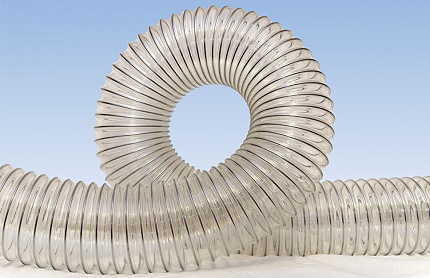
Neither welding equipment, nor a large number of connecting elements, nor special supporting structures are required for their installation. The disadvantages are the same as for flat plastic pipes - complete unsuitability in high temperature conditions. Add to the list of shortcomings, and increased noise during the operation of the exhaust system.
There are several types of corrugated pipes, but for the exhaust device, they are most often used:
- Single-layer, with increased flexibility and low weight.
- Two-layer, with high strength characteristics. They are also mechanically and chemically stable.
They are made from the same raw materials as other types of plastic pipes. Products have recesses on their surface located at the same interval from each other. Corrugated 2-layer polypropylene pipes have a smooth inner surface and a diameter of 16 to 63 cm.
For their manufacture, manufacturers use a screw extrusion method with the formation of a corrugation along the entire outer surface. In places of depressions, a layer inside the pipe is welded.
The strength of the corrugated pipe is several times higher than that of smooth pipes. corrugated elements are produced for the construction of hoods with varying degrees of stiffness. This parameter depends on the presence of thickening on individual rings.
Material Overview
The assortment of pipes, both flexible and rigid, is very large, it is not difficult to work with them, so consumers appreciated them. They confidently displace steel analogues from the sphere of private construction.
For their production, polymers such as polypropylene (PN), polyvinyl chloride (PVC), polyurethane (PUF), fluoroplast (PVDF) are used. PVC pipes are in greatest demand.
PVC pipe analysis
This inert polymer has sufficient rigidity. Its elasticity is increased by introducing plasticizers into the composition.The glass transition temperature is rather high - 75⁰С.
Under normal conditions, the decomposition of the material takes decades, but at a temperature of 160 to 180 ° C it begins to decompose very quickly. Because of this, it cannot be used for ventilation in rooms such as saunas, where the temperature of the steam sometimes reaches 200⁰.

When the material decomposes, carbon monoxide (CO) is released, the inhalation of which is accompanied by suffocation, hydrogen chloride (HCl), which forms hydrochloric acid in an environment with high humidity - an invisible liquid that claims to have a pungent odor.
The compound has a very negative effect on health, in particular, on the state of the respiratory tract. In difficult cases, vision may deteriorate sharply.
From this we can conclude: PVC pipe is great for cooker hood, but only in those places if the temperature threshold does not exceed + 120⁰С. Negative temperatures are also contraindicated for these pipes.
Polypropylene Ventilation Pipes
Polypropylene is a resistant polymer, the hardest of plastics and easily amenable to transformation. Its softening occurs at 140 ° C. It poorly withstands polypropylene negative temperatures - it immediately becomes brittle, brittle, therefore it is suitable only for internal use.
For a hood, take polypropylene pipes with designation PN10. This type is characterized by such dimensions as the outer diameter - 2-11 cm, wall thickness - 0.19-1 cm.

Pipes made of polypropylene are single-layer and multi-layer.
The first include products marked:
- PPH - made of homo propylene;
- RRV - the material for the manufacture is a block copolymer of polypropylene;
- PPR — made from a random copolymer of polypropylene;
- PPs - a flame-retardant material is used in the manufacture.
Multilayer pipes are reinforced with foil and fiberglass. They have increased rigidity and a small coefficient of thermal expansion. Polypropylene products are less durable than PVC, therefore they have thicker walls and their cost is higher.
Polyurethane ventilation pipes
The characteristics of polyurethane pipes are very similar to those of PVC pipes. They are plastic and durable, they can be given any shape.
The main difference is the ability to remain unchanged until a temperature of 280 ° C is reached. If this threshold is exceeded, polyurethane becomes very hazardous to health because it releases nitrogen compounds.
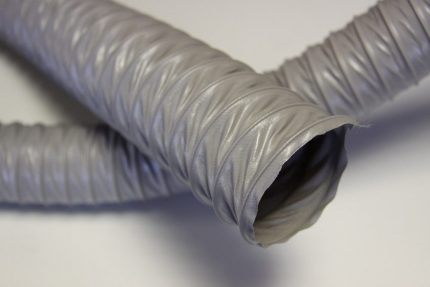
They are used in areas with complex trajectories, many turns and shifts. Somewhat reduces the aerodynamic characteristics of these pipes, the presence of roughness on their inner surface. The cost of such pipes is quite high.
Characterization of fluoroplastic pipes
Pipes from this material have high strength characteristics. Well established in a temperature range from -40 dl + 140 ° C. Fluorine plastic is recognized as the most slippery polymer, this fact is even recorded in the Guinness book.
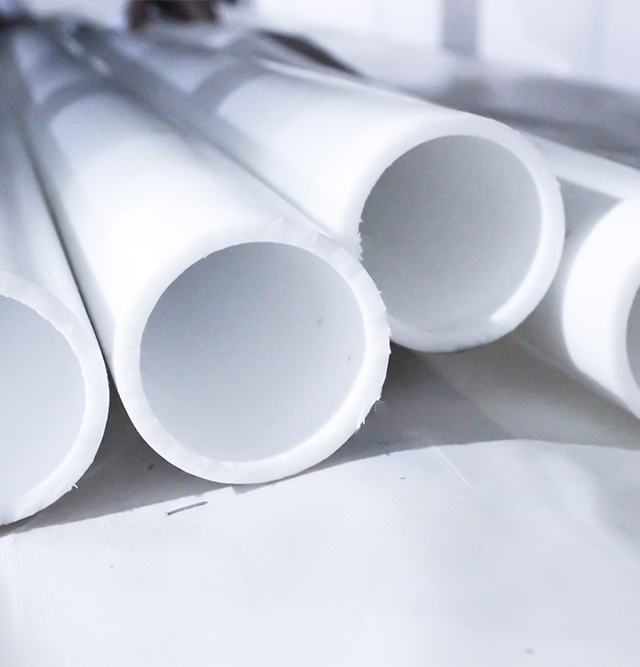
They are resistant to aggressive alkaline and acid fumes, therefore, indispensable for exhaust systems in chemical industrial enterprises. The diameter of the product ranges from 15 to 60 cm.
Due to their high cost, it is irrational to use them in the private sector.Another limitation to their use is their increased gas permeability.
Plastic ventilation from sewer pipes
Experts often argue whether it is possible to make a plastic hood from sewer pipes. Opponents of this idea give such an argument as the absence of an antistatic coating in these products, as a result of which their inner surface is not immune to dust and dirt. Supporters say the problem will be resolved if this procedure is carried out independently.
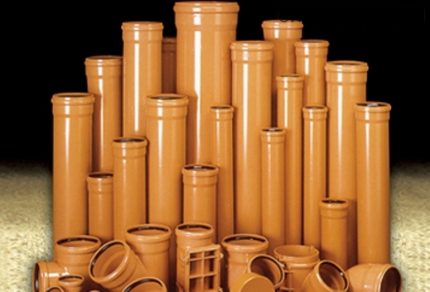
The indisputable advantage of pipes for sewage devices is that their price compared to plastic ducts is lower than 3 times. The disadvantages of these pipes and special ventilation products are common - loss of stiffness at high temperatures.
When using pipes designed for the construction of sewage systems as a supply air duct, the smell characteristic of plastic is sometimes felt, but after a while it disappears. Pipes differ and are slightly larger than those of air ducts. For them, it is necessary to provide for mounting.
The device of the polymer duct
When installing the duct, it is important to observe several rules:
- The length of the pipe should not exceed 3 m, otherwise the efficiency of the device will decrease.
- The diameter of the hole through which the pipe is connected to the ventilation shaft cannot be larger than the diameter of the pipe.
- Do not bend the pipe more than 90⁰. This will disrupt the normal flow of air.
4. Special valves must be used to prevent back draft. - An adapter must be installed at the transition point from the hood to the ventilation shaft.
This option is not recommended for implementation when the stove and the hood above it are on the side opposite to the exit to the ventilation shaft. At the same time, the length of the pipes and the number of turns will increase significantly, which will reduce the efficiency of the hood to a minimum.
An important parameter in the exhaust device is the diameter of the pipe. If it turns out that it is smaller than the size of the outlet, the load on the engine of the hood itself will increase, the noise level will increase to an uncomfortable perception. This will be followed by breakdowns, additional repair costs.
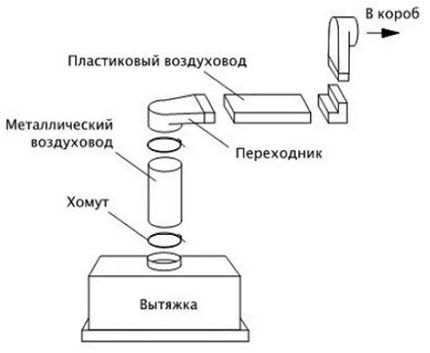
Ducts are always trying to hide. For this purpose, decorative boxes are mounted, the structure is built into the furniture. An acceptable option is to install the pipeline over a suspended ceiling. The main thing is not to violate any of the safety rules.

If necessary, connect pipes having different sections, use bends, special connectors, adapters. The inner surface of these elements must correspond to the external parameters of the duct.The pipe segment is inserted into the connector and ensure tightness, using the appropriate sealant.
There is a socket-type mounting connection. It is used when joining pipes of different sections. A smaller pipe is inserted into the wider end of the pipe. Fixing takes place using a thread or a special rubber seal.
We will analyze the standard assembly sequence for the exhaust duct from plastic pipes:
The role of the check valve in the system
Presence in the system check valves will prevent air from entering the room from the ventilation duct. To prevent claps, it is necessary to install the valve axis perpendicular to the floor. The valve can only open when the hood is working.
Among the variety of such products, 3 types of valves are most often chosen:
- Reverse Petal. This is a series of blinds oriented inoperative vertically or horizontally. They open when the forced hood is turned on. Usually, walls with inlets are chosen for their installation.
- Turning. This is a simple mechanism that controls the intensity of the flow or completely blocks it. It is made in the form of a block with a valve located on the axis and controlled by a system of counterweights and rods manually or using automation.
- Bivalve "butterfly". In the body of this product is an axis on which there are two shutters. When the fan is on, the dampers open; when it is turned off, they take their original position.
Often, by connecting the exhaust structure to the ventilation passage, completely block the path of clean outside air into the building. Then, with an inoperative hood, the room is completely not ventilated.
To prevent this from happening, it is necessary to install a special grill on the opening of the ventilation shaft. In the upper part of it there is a pipe for connecting the exhaust pipe and at the bottom there are holes through which air flows naturally.

Plastic ventilation pipes for the hood for both the gas column and the stove sometimes go on sale complete with the hood itself. The components of such a system are selected by color and texture, so you won’t have to think about how to mask or refine the pipes.
Conclusions and useful video on the topic
Video # 1. Well-designed version of the kitchen hood:
Video # 2. Here is all about installing plastic ducts with a rectangle in cross section:
Video # 3. On the advantages of plastic ducts and their installation:
The best type of pipe for retraction is plastic round long products. The rectangular profile, although it looks more aesthetically pleasing, but it provokes increased resistance in the ventilation system, leading to equipment overload.
Please write comments in the block below. Express your own opinion, share your impressions about the information we have proposed. Perhaps you yourself assembled a plastic duct? Tell us about it, post a photo of the process. Report new ventilation duct options.

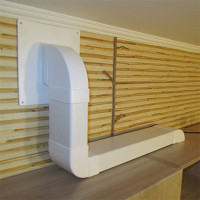 Plastic ducts for hoods: overview of types + installation rules
Plastic ducts for hoods: overview of types + installation rules 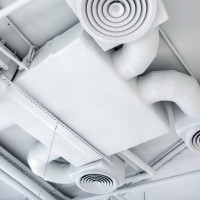 Plastic ducts for ventilation: varieties, recommendations for selection + ventilation duct arrangement rules
Plastic ducts for ventilation: varieties, recommendations for selection + ventilation duct arrangement rules 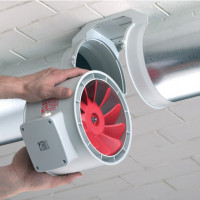 Ductless silent fans for hoods: existing types of devices and their operating parameters
Ductless silent fans for hoods: existing types of devices and their operating parameters 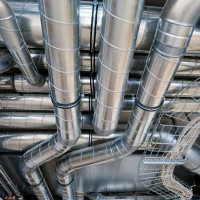 Types of ventilation pipes: a detailed comparative overview of ventilation pipes
Types of ventilation pipes: a detailed comparative overview of ventilation pipes  Installing a hood with a non-return valve: the nuances of selection and installation with valuable tips
Installing a hood with a non-return valve: the nuances of selection and installation with valuable tips 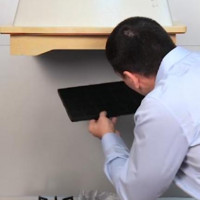 Charcoal filter for hood: device, principle of operation and replacement technology
Charcoal filter for hood: device, principle of operation and replacement technology  How much does it cost to connect gas to a private house: the price of organizing gas supply
How much does it cost to connect gas to a private house: the price of organizing gas supply  The best washing machines with dryer: model rating and customer tips
The best washing machines with dryer: model rating and customer tips  What is the color temperature of light and the nuances of choosing the temperature of the lamps to suit your needs
What is the color temperature of light and the nuances of choosing the temperature of the lamps to suit your needs  Replacement of a geyser in an apartment: replacement paperwork + basic norms and requirements
Replacement of a geyser in an apartment: replacement paperwork + basic norms and requirements
Such a duct system and hood were ordered from a specialized company. They ordered installation work there, the workers installed it quite successfully, it turned out quite nicely and stylishly. And most importantly, environmentally friendly! I believe that such ventilation options can be recommended to everyone, without any doubt about their reliability. By the way, at first they wanted to buy from stainless steel, but the price was very, very high.
Our kitchen is not in the house, but in the summer extension. When he conducted the ventilation duct from the hood, he placed corrugated pipes. Of course, it was risky, as everyone advised to put ordinary plastic round pipes. But I did not regret it. Ventilation works well. There is no overload for the operation of the hood and the system. But if I spent in the house, I don’t know, would the air be sucked in as well as in the summer kitchen?